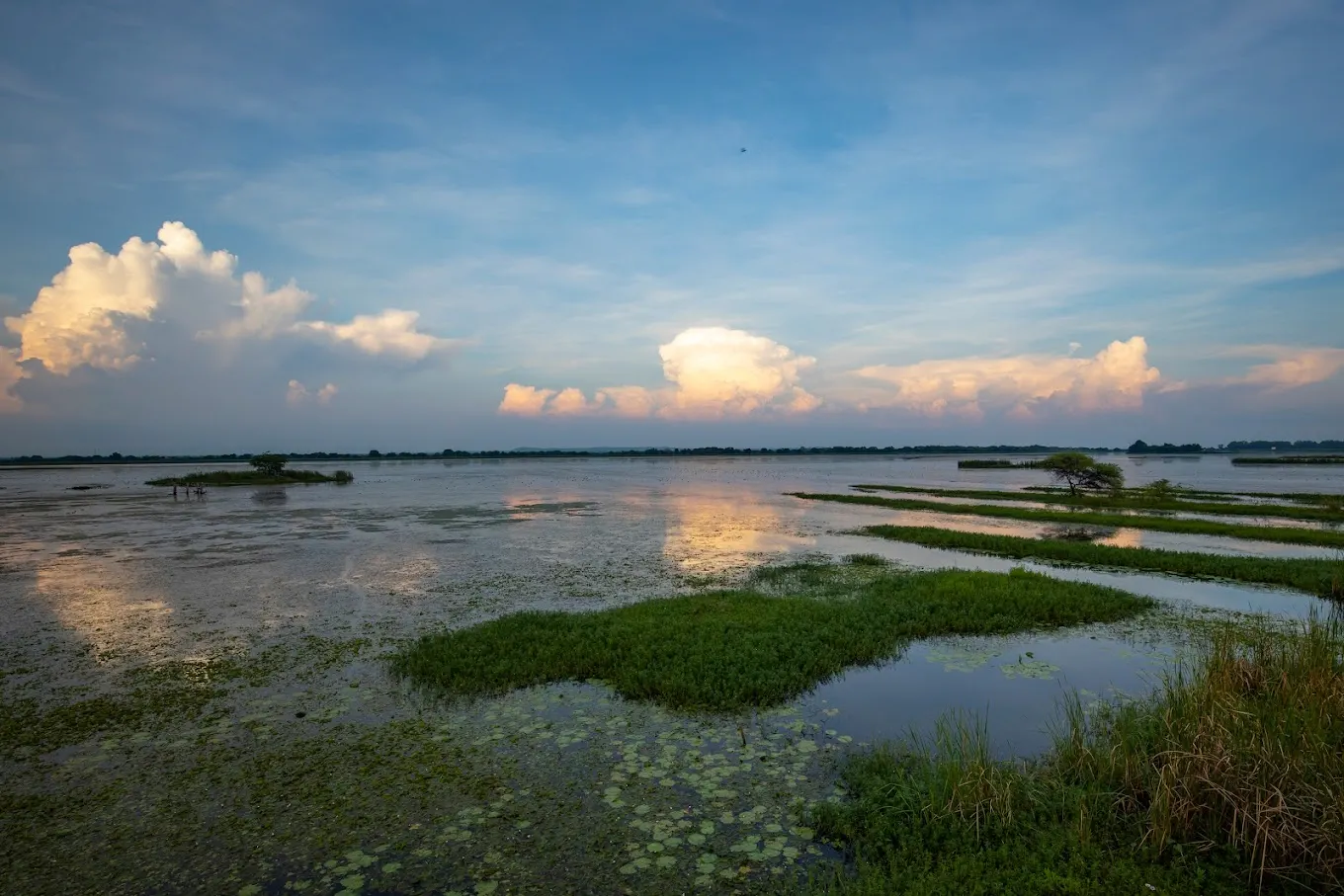Nandur Madhmeshwar (Madhyameshwar) is a bird sanctuary spread across 10,000 hectares. Located in the Nashik district, this bird sanctuary consists of a wetland covering more than 1,500 hectares, which is home to a variety of plants, animals, & especially birds.
There are four watchtowers in the sanctuary from where you can spot birds. Local guides are also available to help you with any information you might need about the birds.
Carrying your own binoculars is a plus point for a better birdwatching experience. Although, you can also rent binoculars from them, at a minimal cost.
A Guide to Nandur Madhmeshwar
The Flora & Fauna
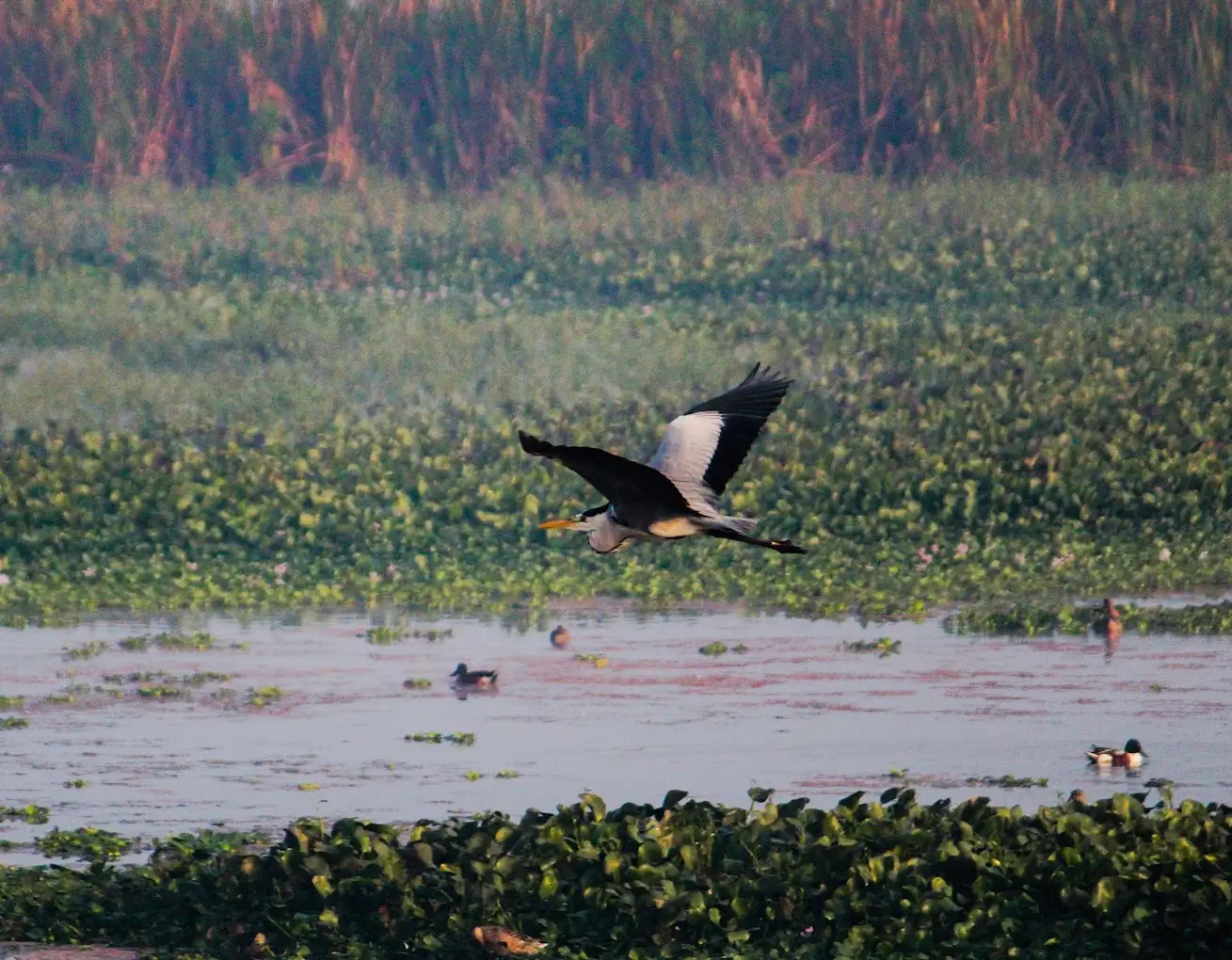
The sanctuary is home to more than 450 types of plants, including 80 aquatic species. Most of these are common trees found across the lake’s edge. Babul, Neem, Mangi, Nilgiri Panagara & Tamarind (Imli) to name a few. The rare species, though, is the Indian Sandalwood (Chandan).
The sanctuary isn’t known for a large variety of animals. It still has some mammal species & about 40 species of butterflies. The main, & rare, attraction among them is the Indian Leopard.
The Sanctuary also hosts more than 30 species of freshwater fishes, including the rare Deolali Minnow & Bengal Eel. A study also found three alien species in the wetland along with the native species. However, it’s very unlikely that you’ll see these fish for yourself.
And last but not least, Nandur Madhmeshwar hosts over 250 bird species. This includes about 80 migratory species from other parts of the world, such as Europe, Central Asia, and Serbia.
Here’s a list of all the birds in those wetlands that I know & other visitors have reported:
Commonly Observed Birds:
- Painted Stork
- Black Ibis
- Glossy Ibis
- White Ibis
- Purple Moorhen
- Indian Moorhen
- Gray Heron
- Purple Heron
- Night Heron
- Ruddy Shelduck
- Common Teal
- Spot-billed Duck
- Cotton Teal
- Gadwall
- Northern Pintail
- Northern Shoveler
- Eurasian Wigeon
- Coot
- Garganey
- Common Crane
- Spoonbill
- Common Stork
- Little Grebe
- Cormorant
- Kite
- Buzzard
- Harrier
- Osprey
- Quail
- Partridge
- Sandpiper
- Swift
- Grey Hornbill
- Peafowl
- White Stork
- Flamingo
- Brahminy Duck
- Mallard
- Common Pochard
- Cranes
- Shanks
- Curlews
- Pratincole
- Wagtails
- Godwits
- Weavers
- Egret
Critically Endangered & Endangered Birds:
- Indian Spotted Eagle
- Eastern Imperial Eagle
- Common Pochard
- Bristled Grassbird
- Woolly-necked Stork
- White-rumped Vulture
- Indian Vulture
- Egyptian Vulture
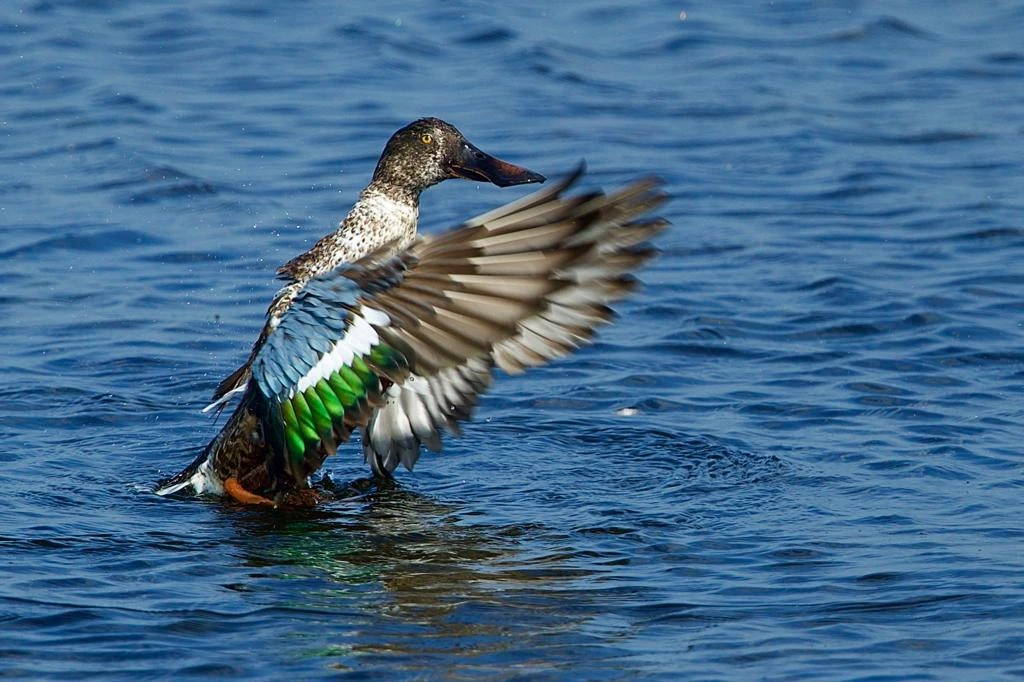
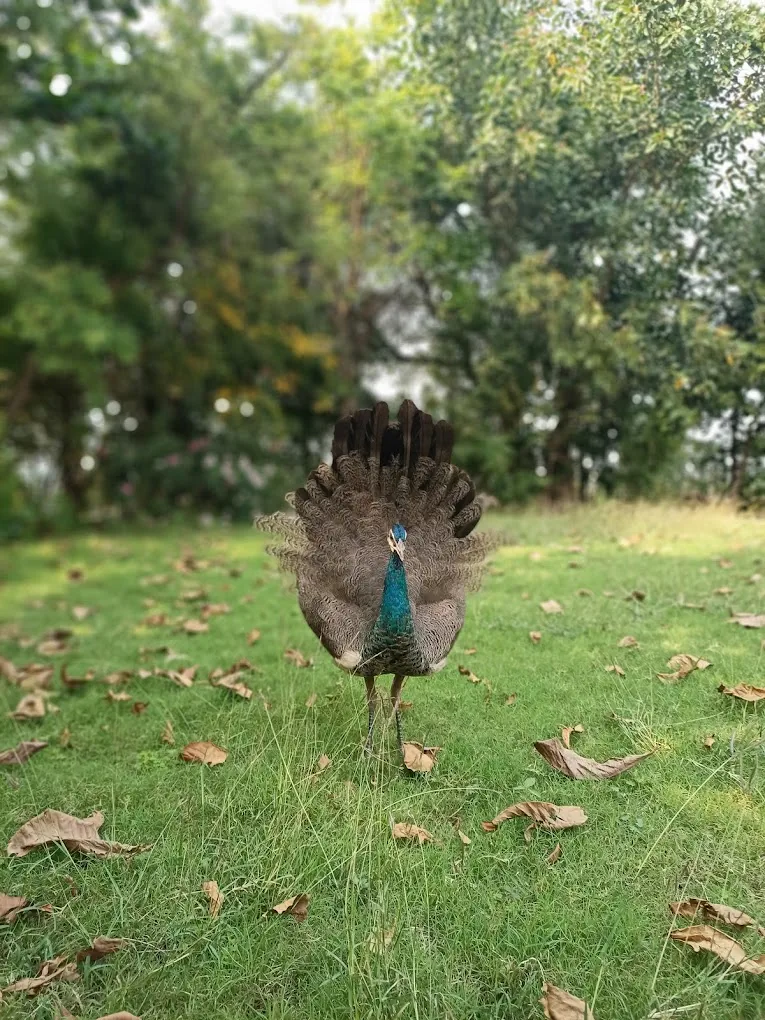
Best Time to Visit Nandur Madhmeshwar
The Sanctuary opens at around 7:00 in the morning. And I recommend you to visit as soon as it opens. There are two reasons for it:
- Birds are most active just after sunrise (& just before sunset).
- There is very little human disruption in the early mornings. This prevents the birds from being disturbed and flying away.
Winter, October to March, is the best time to visit Nandur Madhmeshwar Bird Sanctuary. Many migratory birds travel here during this time, making it ideal for birdwatching. The climate is also pleasant during this season.
Apart from birdwatching, visitors also enjoy boat rides and photography. The surrounding areas are also home to various agricultural crops, such as wheat & sugarcane. Adding to the beauty of the area, the Nandur Madhyameshwar Dam is also a popular hotspot for visitors.
Origin: When did it all start?
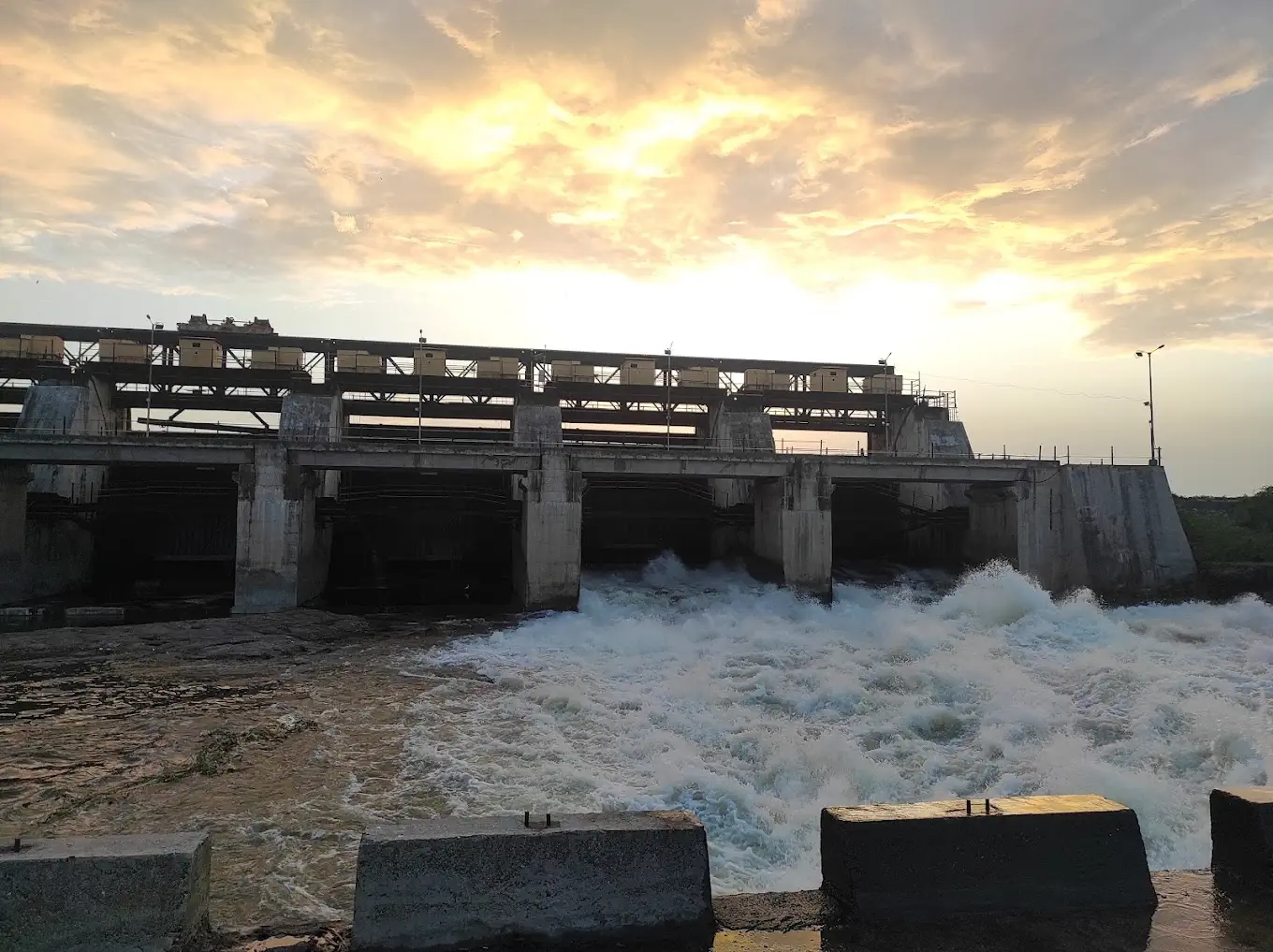
Nandur Madhmeshwar was not a planned sanctuary like others. It all started with a water shortage in the area. The Britishers built the Nandur Madhyameshwar Dam originally for irrigation purposes. This gave rise to the wetlands in the area.
Being a wetland, the area started to become an ideal spot for flora & fauna to prosper. Also, the pleasant climate of the area invited many migratory birds from different parts of the world facing extreme climates. This gave these wetlands the status of a Sanctuary, in precisely 1986 .
The sanctuary now comprises a diverse range of habitats. This includes wetlands, grasslands, forests, & agricultural fields. Nandur Madhmeshwar is thus referred to as the ‘Bharatpur of Maharashtra,’ after the famous Keoladeo National Park in Bharatpur, Rajasthan.
The wetland was also declared a RAMSAR site on 26th June, 2019. For those of you who don’t know, a RAMSAR site is a special area designated to protect important wetlands around the world. These sites are globally recognized for their ecological value, such as supporting wildlife & maintaining water quality.
I’ve tried to showcase the significance of Nandur Madhyameshwar through this blog. However, you’ll truly grasp its importance and beauty by visiting the area yourself. Seeing it firsthand is the only way to have a top-notch experience. I hope you have a fantastic time!

